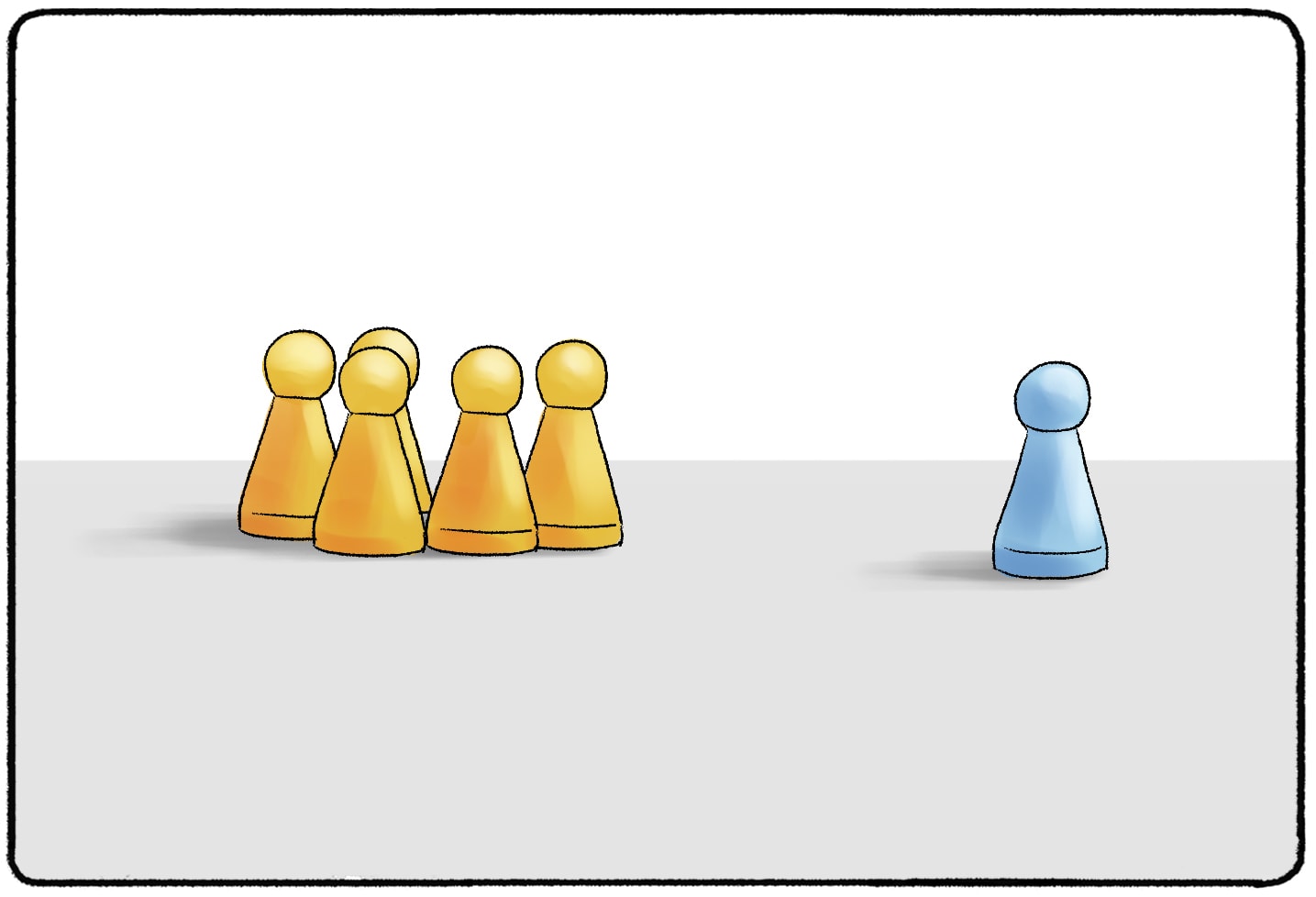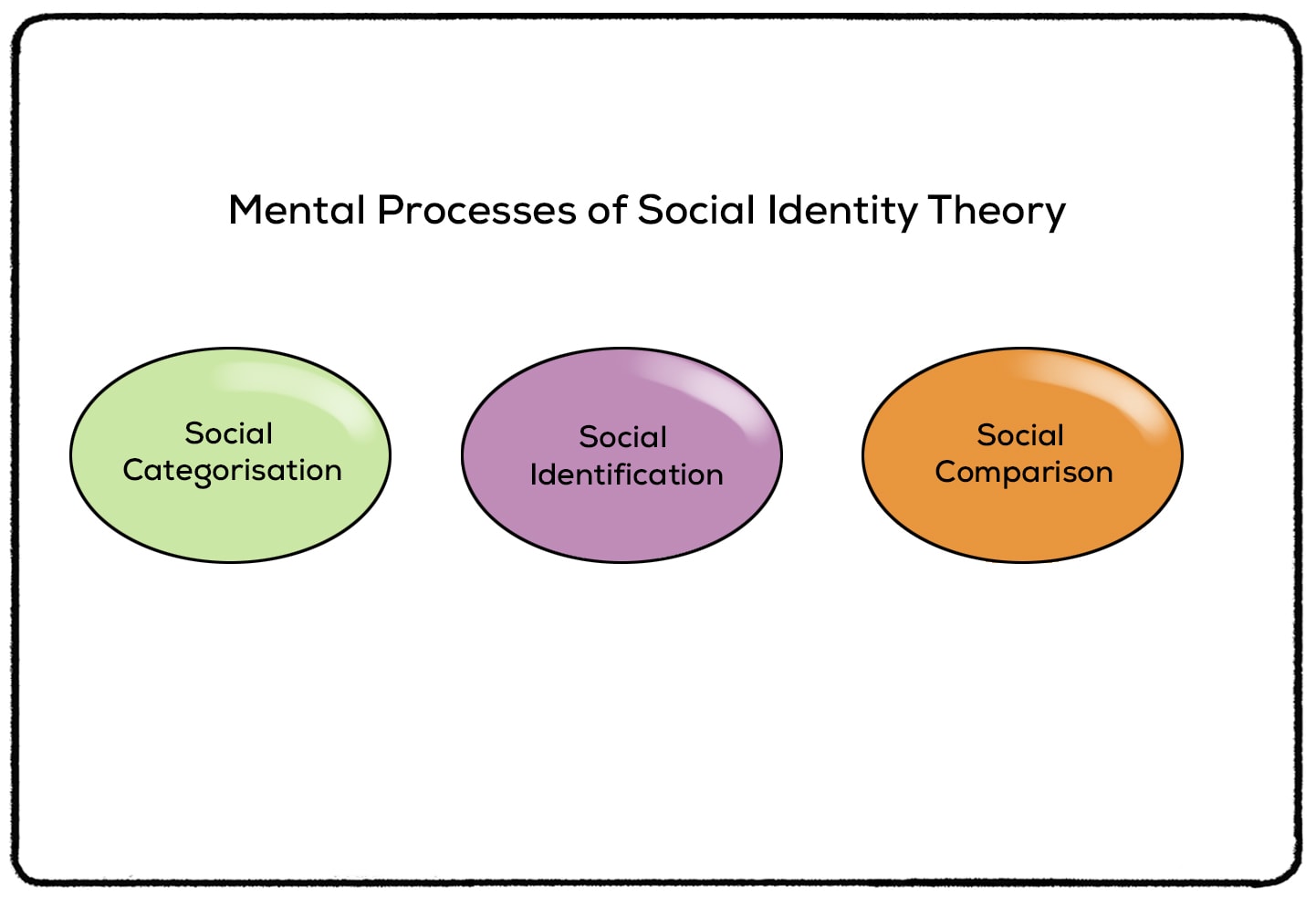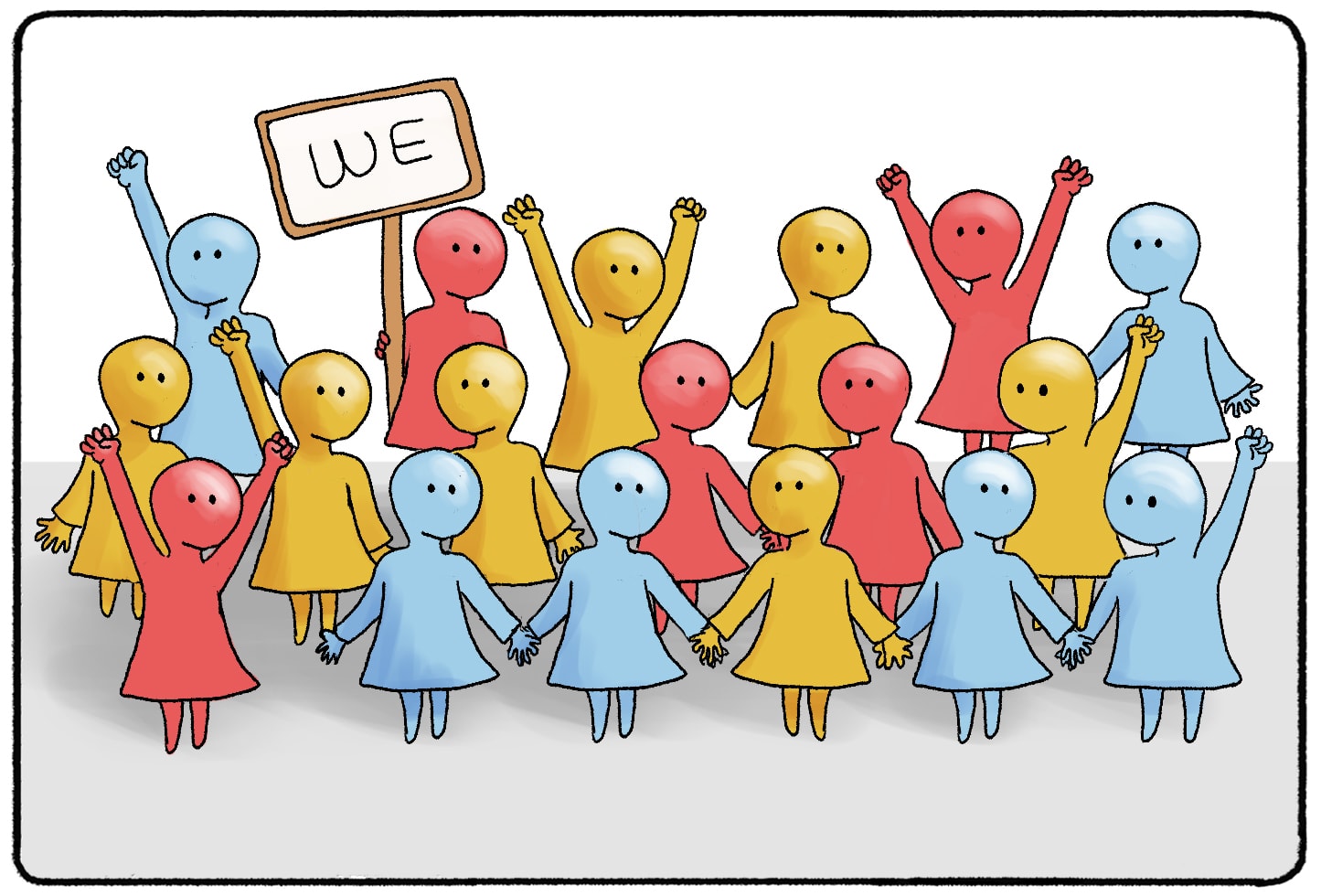How do you identify? What groups do you belong to? I’m not just talking about Facebook groups. I’m talking about the groups that you interact with every day - the groups that you feel you belong to. You may identify as a student of Temple University. Or you may identify as a member of your immediate family. Or as a Catholic.
The Social Identity Theory looks closer into how we come to belong to these groups and how it affects the way we socialize with others.
What Is Social Identity Theory?
In the late 1970s, Henri Tajfel and his team conducted a series of studies that would lead to the creation of the Social Identity Theory. The theory looks at why we are so loyal to groups that we belong to and why identification with one group inevitably causes conflict with others.
About Ingroups and Outgroups
For every “group” or "ingroup" that you belong to, there is another group. These are people that don’t identify in the same way. The “others.” The students who go to other colleges, who come from different families, or practice different religions.

These groups, and the conflicts between them, have shaped human history. Fighting over land or in the name of religion has created the countries, borders, and policies that we abide by today. Conflict between different racial, ethnic, and religious groups still dominates our headlines and affects the lives of people all around the world.
Social identity theory not only attempts to explain this "us vs. them" mentality, but also the symptoms of that mentality: prejudice, stereotyping, etc.
What Are The Three Stages of Social Identity Theory?

As individuals go through three stages and enter into groups, they potentially develop the us vs. them mentality that has shaped the story of human history.
Those three stages are:
- Categorization
- Identification
- Comparison
Categorization
The first stage of the Social Identity Theory is categorization. You cannot belong to a group unless you know what groups exist.
We do this through observation of the world around us. It doesn’t take long to see that people are divided into different groups. All it takes is walking into a school cafeteria (like that iconic scene in Mean Girls) or listening to the news. Groups are labeled by their religion, nationality, physical abilities, so on and so forth.
Identification
Once you can categorize the world into different groups, it’s time to look at yourself. How do you identify?
Understanding your identity does more than continue to simplify how you look at the world and the different groups within it. It can also give you a sense of belonging.
Maslow’s hierarchy of needs has remained a crucial model for understanding human behavior and what motivates us to make decisions. At the bottom of this hierarchy is basic needs. Before we can explore the world at large, we need to feel safe and know where our next meal is coming from. Once these needs are satisfied, we seek love and belonging.
We can get this love and belonging from identifying with certain groups. This desire for belonging may also influence the ways in which we mold ourselves to fit more into that group. Maybe you join a fraternity and start wearing that fraternity’s letters around campus. Or you become a young professional and jazz up your wardrobe to look more like the professionals at your work. Hairstyles, fashion trends, and even decisions on where to live may all be influenced by a person’s desire to fit in with a certain group.
Examples of Identification in Social Identity Theory
There are many ways to answer this question. You can identify yourself as a man, woman, or non-binary person. In addition to this, you can identify as a Catholic, Muslim, or Scientologist. You can also identify as straight, lesbian, or pansexual. Or you can choose to identify as none of these things! Just as you might identify someone as a man, a feminist, and a member of the football team, you may also take on multiple identities and feel that you belong to different groups.
The style of our hair or the car we drive makes it more obvious that we belong to a certain group. When we communicate this identity to people in that group, we are validated and feel that necessary sense of love and belonging.
Comparison
Why do we get this type of validation from making our identities more “obvious?”
It’s because the last stage of the Social Identity Theory is comparison. This is where the Us vs. Them mentality starts to come into play.
Is Social Identity Theory Testable?
One of Henri Tajfel’s experiments regarding the Social Identity Theory asked participants to compare and assess people in different groups. The participants were given a group to identify with. (This group was meaningless outside of the experiment.) Throughout the experiment, Tajfel’s team asked participants to give points to other participants.
Even though the groups were arbitrary, participants were more likely to give points to people in their group. This is a clear reflection of how we compare ourselves and people in our group to “outsiders.” Although other factors like race, age, or gender may have influenced their decisions, the categorization by Tajfel alone was enough to influence the participants.

Henri Tajfel Quotes
Henri Tajfel was a Polish-born social psychologist best known for his work with the social identity theory. He has written a handful of books on the subject. Below are some of his most notable quotes.
From a Publication in Psychological Review
"Thus, it may well be that an accentuation of differences in size will hardly occur between two paintings, one liked and one indifferent or disliked. But when skin color, or height, or some facial traits of social ‘value’ are concerned, there will be marked sharpening of differences in the degree of these characteristics perceived as belonging to individuals who are assigned to different categories."
From an Essay in the Journal of Social Issues
"The etiology of intergroup relations cannot be properly understood without the help of an analysis of their cognitive aspects, and also that this analysis cannot be derived from statements about motivation and about instinctive behaviour."
Books by Henri Tajfel include:
- Human Groups and Social Categories
- Social Identity and Intergroup Relations
- Differentiation Between Social Groups
- The Social Psychology of Minorities
Examples of Social Identity Theory
It’s in our nature to make these categorizations and comparisons. Yuval Noel Harari, the author of Sapiens, says “Homo sapiens evolved to think of people as divided into us and them. ‘Us’ was the group immediately around you, whoever you were, and ‘them’ was everyone else. In fact, no social animal is ever guided by the interests of the entire species to which it belongs. No chimpanzee cares about the interests of the chimpanzee species, no snail will lift a tentacle for the global snail community.”
Early Homo Sapiens weren’t motivated by identity politics. They were motivated by limited resources, including food, water, and shelter. They could trust that people in their own group would share the wealth and provide for people within their group. But “them?” Letting “them” have access to these limited resources could threaten the livelihood of the group they belonged to.
This could explain why people in Tajfel’s experiment were more likely to give points to people in their group.
This story is all too familiar. Have you ever heard someone say that they are worried that immigrants are taking jobs away from citizens? Or that the country is “overrun” by people of a different faith or identity? These are the same fears that early Homo sapiens when they lived as hunter-gatherers. They motivate politicians to make laws banning people from having certain rights or putting “others” into internment camps.
Criticisms of Social Identity Theory
No theory is perfect. Social Identity Theory, like many theories in social psychology, may conflict with other theories or fail to explain everything. Take, for example, this question from Reddit:
"Is it fair to argue that social identity theory is limited in terms of understanding internalised oppression and identifying with out-groups?"
They follow up with this question by saying, "I ask this question because of theory’s emphasis on pride and self esteem gained through in-group identification. However, as we know, this is not always the case. Throughout history, marginalised groups have identified with oppressive narratives against their own groups. In such instances, I feel that other theory’s , such as symbolic Interactionism, particularly Cooley’s theory of the looking glass self, may better capture such dynamics. However, I am not sure if I am missing something."
Users responded with additional resources and ideas within social identity theory that we have not explained on this page.
u/browneyes3190 said:
"There is a part of SIT that explains how people with stigmatized identities manage their identities and strive to achieve positive distinctiveness. There are three main strategies. The one you describe is called individual mobility and is when people de-identify with their stigmatized group and seek to join a higher status group instead. Socio-structural conditions influence people’s ability to follow the different strategies (e.g., permeability of group boundaries)."
u/soggyagain said:
"I think there are extensions to SIT which address socio-structural conditions like the stability and permeability of identities and it is within the scope of SIT for people to hold multiple identities which have conflicting interactions. It might be that a minority individual thinks, rightly or wrongly, that there is some permeability in the majority group and can cross over by identifying with it in some way. I don't know enough about SIT to say it definitely doesn't cover internalised oppression. But seems like you do have to draw on a concept about how the self is seen by others to explain these phenomena - the one that came to mind was W.E.B. DuBois explanation of Black American experience as double-consciousness - that has obvious similarities with the mirror-self though!
u/no_mango said:
"Look up self categorization theory and the concept of depersonalization."
The comments on this Reddit post helped the user gain clarity on what this theory had to say about certain behaviors and thought patterns. If you have any questions about what you are learning online or in your basic psychology classes, just ask!
This Is Just An Introduction to Social Identity Theory
There is a lot more to learn and explore within the Social Identity Theory. As the Reddit user mentioned earlier said, not everyone who is “part of a group” wants to be identified within that group. Other factors also impact ingroups and outgroups. Threats to the group may result in the group disbanding. And within these groups, people can move “up the ranks” or be categorized into smaller groups.
So keep learning, keep listening, and keep exploring different areas of psychology that might provide further insight into the ideas of identity and belonging!
